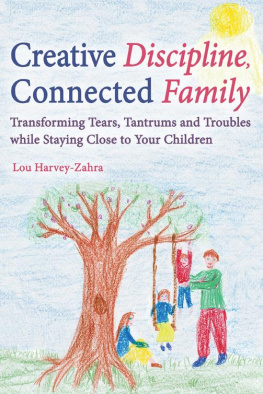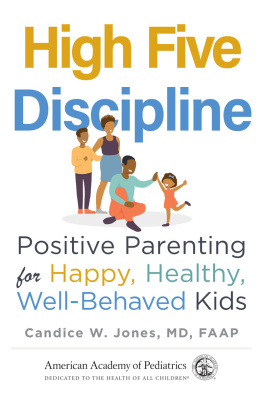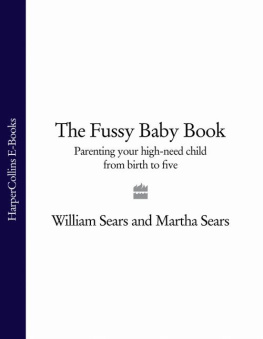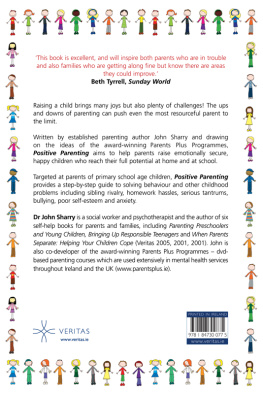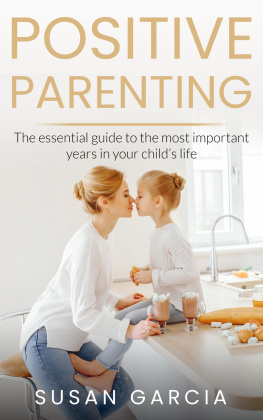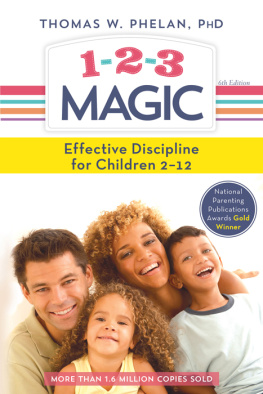Thank you to: my husband Ged, for reading every word in draft form and sometimes changing one or two words to create a better meaning; my daughter Jess and her friend Gabi, for providing our teenage voices; my son Jayson, for your passion for photography; all the families that allowed me to capture their love on camera; Rani Koster (age eleven), for drawing such a lovely front cover for me; parents who share their stories and attend my workshops and talks (I have changed names); my editor, Eleanor, for your way with words; Floris Books, it is always a pleasure to write under your name.
The rules of parents are but three love, limit and let them be.
ELAINE M. WARD
Of all the workshop and talk themes I offer, Creative Discipline is by far the most popular. It is a topic on every parents mind: how do I discipline in a loving and positive way? Can I change behaviour without shouting, time out, threatening, bribing and rewarding? Can I maintain limits and stay connected to my child? Many of us have a strong desire to move away from so-called authoritarian methods of discipline, but wonder whether we can find a clear road map ahead without them. We are seeking a new way. We still need to show children how to live in the world, be socially acceptable, how to respect belongings and other people. Children still require loving boundaries.
Through my decades as a teacher and parent, I have spent more time in rooms full of children than with adults. During these hours and days I have been striving to develop that new road map, to discover a new way of meeting children, seeing their needs, honouring their stage of life, to find alternative solutions to challenges so I can transform difficult situations in a loving manner. This book holds the fruits of my labour and it is a pleasure to share it with you.
Twenty years ago, I was lucky enough to teach in an inspiring setting. All the children in that class were autistic. As a teacher, managing children with autism can have its challenges, but this environment was special. What helped create this positive atmosphere was having behaviour management as one of our goals, and part of our planning and documentation for the children, alongside maths and English.
We had a unique and positive system for dealing with challenging behaviour. It was called the Least-Restrictive-First Method. This method always began with asking why a child was displaying a particular challenging behaviour. This question was considered to gain an understanding of the students motives and needs. What is the behaviour communicating? What skills could we teach to replace the unwanted behaviour? Appropriate professional strategies were followed and recorded: we redirected the student, or changed the classroom environment to change the behaviour, and so on. The least restrictive interventions were always tried first; the most restrictive intervention was time out, and it was only ever used as a last option. Putting a student in time out was serious business: it meant parent consultation and written permission. Over a one-year period, I used the time out technique a handful of times, and with only one student. Time out was used so infrequently, if at all, because the Least-Restrictive-First Method was in place.
The method was very successful: it helped us to understand the students behaviour and create appropriate changes, while maintaining positive teacher and student relationships and a happy school environment.
I have since further developed and described the ideas in the Least-Restrictive-First Method, and renamed it Creative Discipline. Discipline is a positive word: it stems from disciple and means to teach. I use the word discipline in the sense of teaching, rather than punishing. Punishment means to cause harm, fear or pain. If we remember this one idea that discipline means to teach this in itself will transform our dealings with toddlers and children over time.
Creative Discipline, Connected Family outlines how to creatively and lovingly teach young children positive behaviours and how to maintain appropriate boundaries. Creative Discipline techniques provide:
simple solutions to inappropriate behaviours
a learning environment that is fun and nurturing for young children
support for the growing childs self-esteem
a greater understanding of childrens needs
a reduction in tantrums, tears and hurt feelings
children gaining positive skills for life
a safe and predictable home environment
greater confidence for parents too
a reduction in challenging behaviours, and fewer challenging behaviours escalating
happy families where each person feels included and valued
a more relaxed parent-and-child relationship, which can lead to a connected adult relationship with your grown-up child
happier days for parents: most parents dont wish to spend their days nagging and grumbling!
My work as a playgroup leader for over twelve years has meant many meaningful hours spent with lovely toddlers, young children and their parents. I find empowering families with this new way of seeing and transforming behaviours very worthwhile. I now teach children in Steiner-Waldorf kindergartens (nurseries) and primary schools using the techniques outlined in this book for a variety of ages and settings. I have gathered many ideas and tools for understanding children and their behaviours. I am still learning every day.
With my own children, now thirteen and sixteen years old, I witness the results of parenting with Creative Discipline. I see how our relationship is now. Yes, there are still trying moments thats life! but underneath is a strong bond of shared communication and understanding, of love and warmth, as well as firm boundaries. I also observe with joy that children in turn treat others as they have been treated.
Creative Discipline is a matter of parent choice, but parents often do not know what choices are available. When you become parents there are not many, if any, classes on how to manage behaviours. Many of us fall into the category of not really wanting to discipline at all; many of us are too tough and resort to techniques that can hurt or distance children. Many of us, indeed, swing between these two modes.

